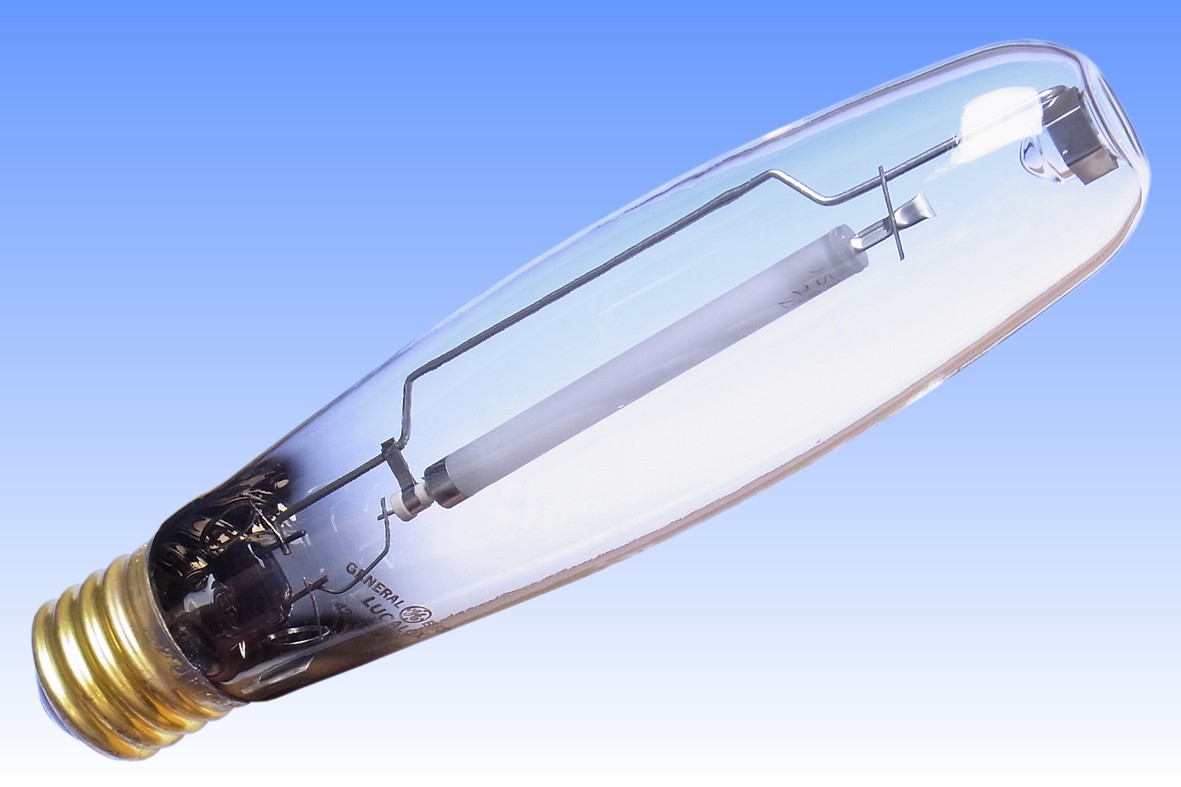
|
GE Lucalox LU250 Universal with Butterfly Crimp |

This problem was overcome with the 1977 invention of Charles McVey, which became known as the Butterfly Crimp design and once again allowed the Lucalox lamp to function reliably in all burning positions. It consists of flattening a portion of the niobium sealing tube around the tungsten shank of the electrode, while leaving two narrow channels open. These allow passage of sodium vapour between the reservoir and arc tube, but prevent flow of liquid amalgam. The butterfly crimped Nb tube is sealed into the ceramic arc tube with an intermediate ceramic plug, and GE's G-54 frit sealing glass (54% Al2O3, 38.5% CaO, 7.5% MgO).
Another advantage of this construction is that it eliminated the need for TIG-welding of the tungsten electrode to the niobium tube, which caused embrittlement of the tungsten, especially with small low power electrodes. Still another advantage was the reduction the the amount of niobium used vs the old end cap design. The opposite end of the arc tube uses an alumina plug with niobium wire seal, combined with frit-distributing lateral tie-wire, which was introduced in 1975 to replace the costly niobium cup at that end.




| Manufacturer: | General Electric Company U.S.A. | |
| Lamp Power: | 250 Watts | |
| Lamp Current: | 3.0 Amps | |
| Lamp Voltage: | 100 Volts | |
| Cap Type: | E39s/41 | Brass + vitrite |
| Bulb Type: | ED-57 | ED-18 in eighths/inch |
| Bulb Finish: | Clear | Lead borosilicate glass |
| Electrodes: | Backwound Tungsten | Ba2CaWO6 Emitter |
| Arc Length: | ||
| Atmosphere: | Inner: Na,Hg | Xe | Outer: Hard Vacuum |
| Luminous Flux: | 27,500 lm (@ 100 hrs) | 24,750 lm (average) |
| Luminous Efficacy: | 110.0 lm/W (@ 100 hrs) | |
| Colour Temperature & CRI: | CCT: 1900K | CRI: Ra 22 |
| Chromaticity Co-ordinates: | CCx: 0.512 | CCy: 0.422 |
| Rated Lifetime: | 24,000 hours | to 50% survival |
| Warm-up & Re-strike Time: | 3-4 minutes | 0.5-1.5 minutes |
| Burning Position: | Universal | |
| Overall Length: | 248 mm | 93/4 inches |
| Light Centre Length: | 146 mm | 53/4 inches |
| Factory: | Ravenna, OH | U.S.A. |
| Date of Manufacture: | June 1983 | Date Code: 42 ∙- |
| Original Value: | ||
